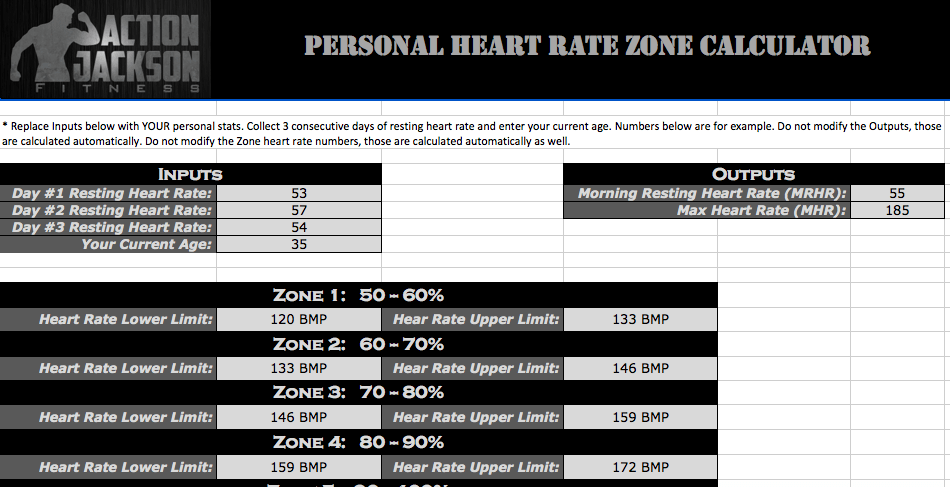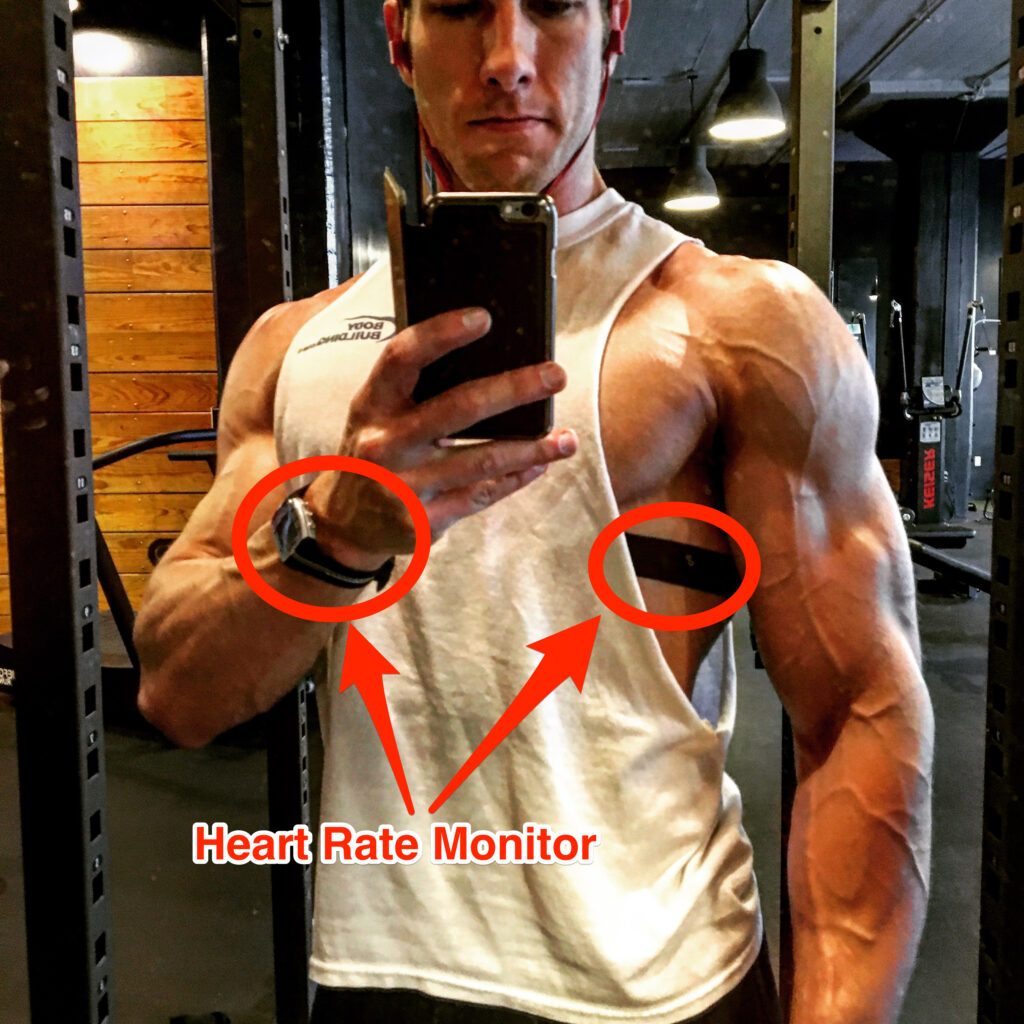Beware: low-intensity steady-state cardio has been proven to lower your testosterone levels, burn up precious muscle mass, and actually increase your appetite making you even hungrier!
It’s also boring as f*ck and takes up a shitload of time you should be using to do more important shit like lying in bed watching House of Cards. Use at your own risk.
If I had one wish, I’d wish for a medium-rare Masto’s rib eye steak with truffle butter and foie gras and a glass of California cabernet every single night of the year for dinner. If the genie was so impressed with the alpha broish nature of my first wish that he or she granted me a second wish, I’d put the above warning on all the cardio equipment in the gym.

I suppose an image of a skull and crossbones similar to the one from Thank You For Smoking would work too although that might encourage people to get on the equipment 😂
Steady-State Cardio Is Dead
Working with 100s of clients over the years, the large majority of them (both male and female) want to decrease body fat. This is no surprise to me. What is a surprise, however, is that the vast majority of them still think that doing traditional cardio such as a treadmill, elliptical, stair master, or stationary bike is the best way to achieve this goal. This is completely back-assward, err — I mean ass-backward. The fact is, steady-state cardio is dead.
On the other hand, outdoor activities such as hiking, biking, skiing, snowboarding, etc are still good with me as long as you aren’t doing them specifically for weight loss purposes. Although I’d keep the jogging to a minimum. Outdoor running is hard on your joints in addition to all the other problems with low-intensity steady-state cardio.
Yes, it is true that bodybuilders since the Arnold era have been using traditional steady-state cardio methods to lean down and “cut” bodyfat. Keep in mind, every bodybuilder since the Arnold era also injects enough testosterone, growth hormone, and insulin to kill a small horse to be fair so we don’t necessarily have to mimic ALL their behaviors.
I love Arnold, like a lot, at least as much as any guy can love another guy he’s never met, but a lot has changed since the “golden age” and science has taught us 3 terribly disturbing things about steady-state cardio. According to scientific research steady state cardio:
Some non-sciencey science-ish things we know about steady-state cardio:
- It’s boring as fuck
- Better have some hilarious YouTube videos like this one to watch
- It takes up a lot of time, which is fine if you are unemployed or in college. For the rest of us with jobs and lives, not so good.
To really drive the point home, especially for you females… I once had a female client that was taking 4-5 Soul Cycle classes per week! Seriously. Apparently, those classes are more addictive than pharmaceutical painkillers. Can you say cult?
Anyway, she wanted to lose some bodyfat and add a bit of tone so she could fit into a few of her smaller, yet more expensive dresses that were getting too tight. The first thing I had her do was cut the spin out. I didn’t want to be a complete dick and I wanted her to… you know, enjoy her life too so I let her go to one class per week on the weekend as more of a social fun activity.
In addition to cutting the spin, we began doing metabolic resistance training (MRT) 2x per week for 40-min per session. The end result, within 6-weeks she had lost 8 pounds. Yes, she exercised less… like a lot less and actually lost weight, toned up, and was able to fit into the rest of her wardrobe.
(I just helped my client Michael lose 25 lbs, drop 11% body fat, and go from no-pack to six-pack in just 10-weeks using metabolic resistance training (MRT). Enter your name and email below and I’ll send you his EXACT 45-min workout including sets, reps, rest intervals, and videos of each exercise.)
Enter The HIIT Zone
Hey, perk up tuff nuts. Don’t worry, there’s another way to get super shredded super fast without long bouts of cardio.
(Is it weird I like to use the word “super”? Sorry, I just really like that word. Like, a lot.)
Anyway, it’s called high-intensity interval training or HIIT for short. I’m sure you’ve heard of it, but do you really know what it is? In my experience working with hundreds of clients, most people get it wrong… hell, even I did wrong for a long time.
To be clear, any exercise or cardio done simply in intervals is NOT high-intensity interval training. HIIT is actually a method of exercising where you alternate between periods of highly intense periods of exercise and low-intensity recovery periods.
The highly intense periods can be described as being between 90-100% of your max all out intensity. This means you’re pushing yourself about as hard, or close to as hard, as you can for a short duration. The low-intensity recovery periods are when you’re trying to catch your breath in preparation for the next high-intensity period.
This is where most people go wrong. They simply do not push themselves hard enough and get their heart rate high enough to get all the amazing benefits of HIIT cardio.
To quantify “hard enough”, research suggests the high interval must be equal to or greater than 80% of your V02max and the low interval should fall between 60-70% of your V02max. More on how to quantify this later.
For example, if you were on a track you could sprint the straightaways (at 90% effort) and walk the curves. Do this for a total of 10 sprints and you have a pretty awesome HIIT Cardio workout.

Benefits of HIIT Cardio
Now that we know the dangers of steady-state cardio and you know what, exactly, HIIT Cardio is — let’s discuss the benefits of HIIT. Unlike steady-state cardio, according to scientific research HIIT Cardio:
- Preserves muscle mass
- Increases testosterone levels
- Increases both aerobic and anaerobic fitness
- Is highly effective at burning body fat especially abdominal fat
- Takes less than 20-min typically and can even be highly effective in as little as 3-4 minutes. Who would have thought you can get a great workout in less time than it takes to have sex?
- This study concludes that doing 4-6 bouts of 30s sprints is more effective for fat loss than doing 30-60 minutes of steady-state cardio at 60% of V02max.
- Lowers insulin resistance
- My good friend and colleague Nate Miyaki explains why insulin sensitivity should be your #1 goal if you want to change your body composition (lose fat, gain muscle) in this article.
If I haven’t convinced you yet that HIIT cardio is far superior to low-intensity steady-state cardio you’re probably one of those guys that still trains in a gray sweatsuit wearing a weight belt while carrying around a gallon jug of water. In that case, your treadmill awaits your arrival King Meathead.
Hell, with all these fat blasting and muscle building benefits of HIIT cardio you should be doing chair sprints as you read this. But wait! There’s more. Hang onto your seat baby because this one’s a screamer.
Don’t go running away from your desk sprinting down the hall yet. First, let me explain how to do HIIT cardio. It’s a bit more complicated than you think.
How To Actually Do HIIT Cardio
There are two ways to do HIIT Cardio:
- The “normal” way
- The Action Jackson way
HIIT Cardio: The “Normal” Way
First, the normal way. Simply, pick the exercise you are going to perform, set the interval timer app on your phone (this one is my fav and free), and get to work.
Some tips on how to be sure you are reaching 80% of your V02max:
- During your high interval, you are giving it 90-100% of your max effort. At this intensity level you should not be able to sustain this output for very long… maybe 10-30s max depending on your conditioning.
- Your breathing should become labored and you will not be able to inhale as much oxygen as your body wants.
- You should be breathing so heavily that you can’t carry on a conversation or speak to anyone with more than a few quick words at a time.
- Your heart will feel like it’s going “beat out of your chest.”
- You’d describe the feeling to a friend as “I’m dying.”
You know what it takes to do HIIT cardio? It takes brass balls to do HIIT cardio.
The last two are pretty scientific as you can tell. I got those directly from PubMed (kidding). As the list demonstrates, HIIT Cardio requires a significant amount of effort. The high interval would be something like an all-out sprint as opposed to jogging or just running “hard.”
Warning: due to the intense nature of HIIT cardio, it’s NOT for everyone. If you are extremely overweight, sedentary, or just starting an exercise program for the first time HIIT cardio will likely be beyond your ability and starting with traditional cardio might be a better option until you can build up your work capacity. That being said, proceed at your own risk.
HIIT Cardio: The Action Jackson Way
If you are an all or nothing type A personality like me or just like quantifying your health/fitness, here is how I go about performing HIIT cardio:
First, calculate your VO2max. If you don’t know have your metabolic cart handy or haven’t had it tested and you don’t know what your V02max is, I’ll give you two simple ways of calculating it:
- Quick & Dirty Method
- Formula: 220 – Age = V02max
- Example: 220 – 35 = 185 bpm (beats per minute)
- Karvonen Formula: Most accurate method without doing an actual V02max test.
Although the Karvonen method is more accurate, it takes considerably more time and describing it and how to calculate it is outside the scope of this article since we’re not teaching math class here. If you are curious and a math whiz, review this page.
If you are lazy, hate math, or just love outsourcing I’m happy to do it for you!

Just enter your name and email below and I’ll send you a spreadsheet to calculate your personalized HIIT cardio heart rate zones using the Karvonen formula (see image above):
Second, let’s determine the minimum heart rate needed for our high intervals. The minimum heart rate is going to be at least 80% of your V02max. I’ll use the 185 bpm V02max I calculated in the example above.
- Formula: V02max * 0.8 = 80% V02max
- Example: 185 * 0.8 = 148 bpm
Because I’m hardcore or just like pretending I’m in 5th-grade math class again, I like to round up to the nearest 10th so let’s call it an even 150.
In this example, that means 150 bpm is the minimum effective dose necessary to elicit the benefits of HIIT Cardio. As conditioning improves, the closer you can get to your V02max (185 bpm in this example), the better.
Third, let’s determine the heart rate for our low interval recovery zone.
- Formula:
- Lower Bound: V02max * 0.6 = 60% V02max
- Upper Bound: V02max * 0.7 = 70% V02max
- Example
- Lower Bound: 185 * 0.6 = 111 bpm
- Upper Bound: 185 * 0.7 = 130 bpm
In this example, I’ll want to make sure my heart rate is spiking up to at least 150+ bpm during my high interval (ideally for at least 10+ seconds). Then I’ll use active recovery (keep moving) with a low interval allowing my heart rate to recover in the range of 111-130 bpm. The duration of your high and low intervals will vary depending on your conditioning, but here are some guidelines:
- If you are a beginner use anywhere between a 3-5 to 1 ratio of low to high interval. This means you will rest for 3-5x as long as you perform your high interval. For example, a 20s high interval will be matched with a 60-90s active recovery low interval.
- If you are intermediate use anywhere between a 2-3 to 1 ratio of low to high interval. For example, a 20s high interval will be matched with a 40-60s active recovery low interval.
- If you are advanced or just want to see what it feels like to have a heart attack use anywhere between a 0.5 to 1 ratio of low to high interval. For example, a 20s high interval will be matched with a 10-20s active recovery low interval.
Keep in mind, these are just guidelines, not gospel.
Fourth, the final step is to strap on a heart monitor with a chest strap and get to work. If you do not have a heart rate monitor with a chest strap I highly recommend you get one. My favorite is the Polar FT7 (see photo below), which is highly accurate even when doing weight training or HIIT cardio.

Frequently Asked Questions
Can I Use My Apple Watch, Jawbone, or Fitbit?
In case you’re wondering… NO, that Apple Watch, Jawbone, or Fitbit just won’t do. Unfortunately, you must expect the device to be intermittently inaccurate and have a delay or lag especially when doing HIIT or lifting weights. During this type of exercise, optical sensors simply don’t work as well as chest straps and most companies freely admit this. Simple solution… get a heart rate monitor with a chest strap.
How long should my HIIT cardio workout be?
Research has shown that doing as little as 2-min of work at 80% of your Vo2max can be highly effective for fat loss, however — let’s get real. You wouldn’t be reading my site if you were the kind of person that likes to just to the bare minimum.
(Bare minimum doesn’t apply to clothing because if you are doing HIIT cardio regularly you won’t want to wear much of it since your body will look RIDULOUSLY FREAKIN AWESOME.)
All joking aside, if you’re just getting started with HIIT I’d recommend doing 5-8 intervals (depending on work and rest interval) lasting roughly 8-10 minutes total for your workout. That’s it. For example, you can do 20s at a high interval and 60s at a low interval for 8 rounds. That’s just over 10-min for a full workout.
If you are more seasoned aim for 15-min and if you are advanced feel free to go up to 20-25 minutes.
Keep in mind the length of the workout is inversely related to the intensity. If you don’t let your heart rate fall and keep it pegged fairly high with minimal rest, you can do less time and still get more out of the workout.
For example, when on vacation I’ll often hit the hotel gym and knock out 10 rounds of deadmill sprints doing 20s on and 40s off for 10-min. By the end, I’m ready to fall over and die but you better believe I burned a shitload of calories.
All that being said, don’t go over 25-minutes. Due to the intense nature of this type of workout, once you pass the 20-minute mark your body has probably burned through all the muscle glycogen it can quickly get its hands on for energy. Once you’ve burned up all your muscle glycogen — you’re done.
Any more work will only result in your body tapping into its hard earned muscle for energy which you definitely don’t want. Referring back to my earlier point, this is why I don’t like my clients going to spin class. The duration and intensity often leads to muscle loss.
HIIT Cardio Example Workout
My favorite HIIT cardio workout goes like this:
Jump on a stair climber at the gym armed with your heart rate monitor and an interval timer. Set the high interval on the timer to 30s and the low interval to 60s. Hit start and get moving.
- High Interval: 30s @ Level 20 (highest level)
- Low Interval: 60s @ Level 10 (50% of high interval)
Total Rounds: 10
I do this workout at level 20 on the high interval, but I start most of my clients off at level 12 on the high interval and level 6 on the low interval. I’ll also adjust their high and low interval time based on their ability to recover. Gradually, I’ll work them up to level 8/16 or level 9/18.
Although I really like the stair climber for HIIT cardio, you can use any cardio machine in the gym to perform a similar workout. Just make sure you are getting your heart rate up high enough.
Action Items
- Stop doing steady-state cardio immediately.
- Start doing HIIT Cardio today. Write one up yourself, use one of the example workouts I provided, Google it, or ask Siri for some help. Just do it.
- Be smart: identify your target heart for your high interval and low interval otherwise you are just guessing and hoping. Pro tIp: hope is not a strategy.
- Get yourself a quality heart rate monitor with a chest strap. They aren’t very expensive and you’ll be amazed at how much better your workouts will be and what you will learn about your workouts, your body, etc.
- Use this free interval timer app for your HIIT Cardio workouts. It works well and even allows you to play music in the background.

